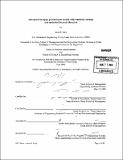| dc.contributor.advisor | Donald B. Rosenfield and David Simchi-Levi. | en_US |
| dc.contributor.author | Kary, Jason R | en_US |
| dc.contributor.other | Leaders for Manufacturing Program. | en_US |
| dc.date.accessioned | 2007-04-03T17:14:33Z | |
| dc.date.available | 2007-04-03T17:14:33Z | |
| dc.date.copyright | 2006 | en_US |
| dc.date.issued | 2006 | en_US |
| dc.identifier.uri | http://hdl.handle.net/1721.1/37126 | |
| dc.description | Thesis (M.B.A.)--Massachusetts Institute of Technology, Sloan School of Management; and, (S.M.)--Massachusetts Institute of Technology, Engineering Systems Division; in conjunction with the Leaders for Manufacturing Program at MIT, 2006. | en_US |
| dc.description | Includes bibliographical references (leaves 69-71). | en_US |
| dc.description.abstract | The impact of the sourcing function on the profitability of U.S.-based manufacturing firms is more significant than ever. Today, the purchased component of the cost of goods sold for many firms is more than fifty-percent of sales.' As the volume of purchased material grows every year, and the sourcing function impacts corporate profitability more and more, it has become critical that effective analysis techniques and cost models are used in the development and execution of sourcing strategies. Perhaps the most critical element of the sourcing process is the determination of the optimal supplier or portfolio of suppliers who will be responsible for providing purchased materials. This thesis explores the allocation of outsourced material demand to the supply base in the aerospace industry. A significant portion of this research involves the development of a framework to support a strategic sourcing organization in the determination of the most appropriate portfolio of suppliers for a group of similarly manufactured parts. This framework combines total cost sensitivity analysis and demand allocation programming. | en_US |
| dc.description.abstract | (cont.) The results of this thesis are intended to present sourcing managers with a framework that can be applied when comparing U.S.-based manufacturers to low-cost international suppliers. The total cost sensitivity analysis enables the sourcing manager to evaluate the impact of supply chain dynamics including tax rates and currency fluctuation, as well as variations in supplier performance on procurement decisions. Using the total cost model output, a sourcing manager is then able to apply the demand allocation programming model to determine the optimal supplier portfolio given aerospace industry constraints and the operational requirements of the organization studied. The demand allocation programming model is developed as a mixed integer linear program (MILP). The basis for the thesis analysis was a six month internship with a major U.S. aerospace OEM. The research was based on hands-on commodity management experience, literature review, and work with sourcing, finance, and operations professionals. | en_US |
| dc.description.statementofresponsibility | by Jason R. Kary. | en_US |
| dc.format.extent | 80 leaves | en_US |
| dc.language.iso | eng | en_US |
| dc.publisher | Massachusetts Institute of Technology | en_US |
| dc.rights | M.I.T. theses are protected by copyright. They may be viewed from this source for any purpose, but reproduction or distribution in any format is prohibited without written permission. See provided URL for inquiries about permission. | en_US |
| dc.rights.uri | http://dspace.mit.edu/handle/1721.1/7582 | |
| dc.subject | Sloan School of Management. | en_US |
| dc.subject | Engineering Systems Division. | en_US |
| dc.subject | Leaders for Manufacturing Program. | en_US |
| dc.title | Advanced aerospace procurement models with sensitivity analysis and optimized demand allocation | en_US |
| dc.type | Thesis | en_US |
| dc.description.degree | S.M. | en_US |
| dc.description.degree | M.B.A. | en_US |
| dc.contributor.department | Leaders for Manufacturing Program at MIT | en_US |
| dc.contributor.department | Massachusetts Institute of Technology. Engineering Systems Division | |
| dc.contributor.department | Sloan School of Management | |
| dc.identifier.oclc | 85775078 | en_US |
